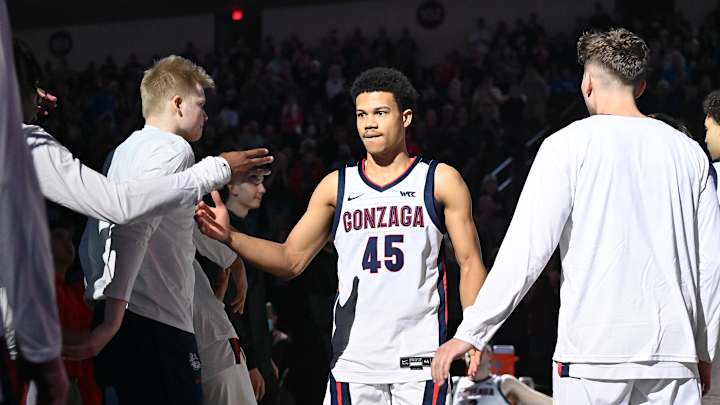Year in review: Rasir Bolton's ascension as a winner

In a year’s time, Rasir Bolton exemplified what being a Zag is all about from the moment he arrived in Spokane. After being the alpha dog at Iowa State, he embraced his new role on a loaded Gonzaga roster with no hesitation or push back, and it ultimately led to a seamless fit alongside Andrew Nembhard in the backcourt. While quietly blossoming into one of the nation’s most efficient players, his humble persona followed him off the court and into the community as well, where he lent a helping hand in any way possible to those in need.
Instead of talking, he let the body of work speak for itself.
Throughout his collegiate career, Bolton’s talent went unquestioned. A sharpshooter and disciplined defender, he was one of the few bright spots on a lackluster Cyclones team that won just 14 games over a two-season stretch. In his time there, he put up 15 points a night while posting a higher usage rate than Tyrese Haliburton. Even alongside a future NBA talent, Bolton’s skillset as a scorer and willing facilitator was heavily relied upon by Steve Prohm, for better or for worse.
But a look past the counting stats drew other concerns. Could his style of play contribute to winning basketball? His time at Penn State and Iowa State said otherwise, as he never got a whiff of postseason basketball at either program while being the lead-man. Not many expected him to take on a similar role with Drew Timme and Chet Holmgren in the lineup, making for an interesting adjustment phase that most transfers struggle with on their new team.
Turns out, a reduced workload was exactly what he needed.
No longer burdened to run the show, Bolton’s basketball IQ was on full display as a speedy spot-up shooter in Mark Few’s system. He flashed as a steady 3-point shooter throughout his collegiate career, but it wasn’t until this last season when the combination of smart shot selection and ability came together, as he knocked down 46% of his attempts from deep. That’s nearly a 15% jump from the year prior at Iowa State despite almost doubling his attempts as a Zag. Playing alongside four NBA-hopefuls certainly generated a lot of open looks, including in transition as a trailer or leader of a fastbreak.
Between the nature of the offense and star power around him, Bolton’s game became an analytical masterpiece featuring 3-pointers and easy layups only. He cut down on the discouraged midrange jumpers he took at Iowa State all together, going from 8.8 to 3.3 2-point field goal attempts per game. With over 90% of his looks coming at the rim or from deep, nearly every shot felt like the best possible outcome.
As a result, Bolton put together one of the most efficient seasons by an individual, as his true shooting percentage (65.6%) and 3-point percentage ranked in the top-20 in the country.
Beyond the gaudy shooting numbers, there was a certain tone of leadership and calmness Bolton carried himself with on the court. Impressive performances against Texas, Duke and Texas Tech were exactly what Few and fans envisioned out of the combo guard; a consistent veteran that can help weather any storm in the path. That was certainly the case against Saint Mary’s in the WCC title game, where Bolton provided timely 3-pointers and free-throws late while Nembhard ultimately steered the offense. Poised and subtly confident, Bolton rarely seemed out of control or lost on the court in such situations.
Consistent, efficient and collected. The quintessential traits that makeup winning basketball.

Cole Forsman is a reporter for Gonzaga Bulldogs On SI. Cole holds a degree in Journalism and Sports Management from Gonzaga University.
Follow CGForsman